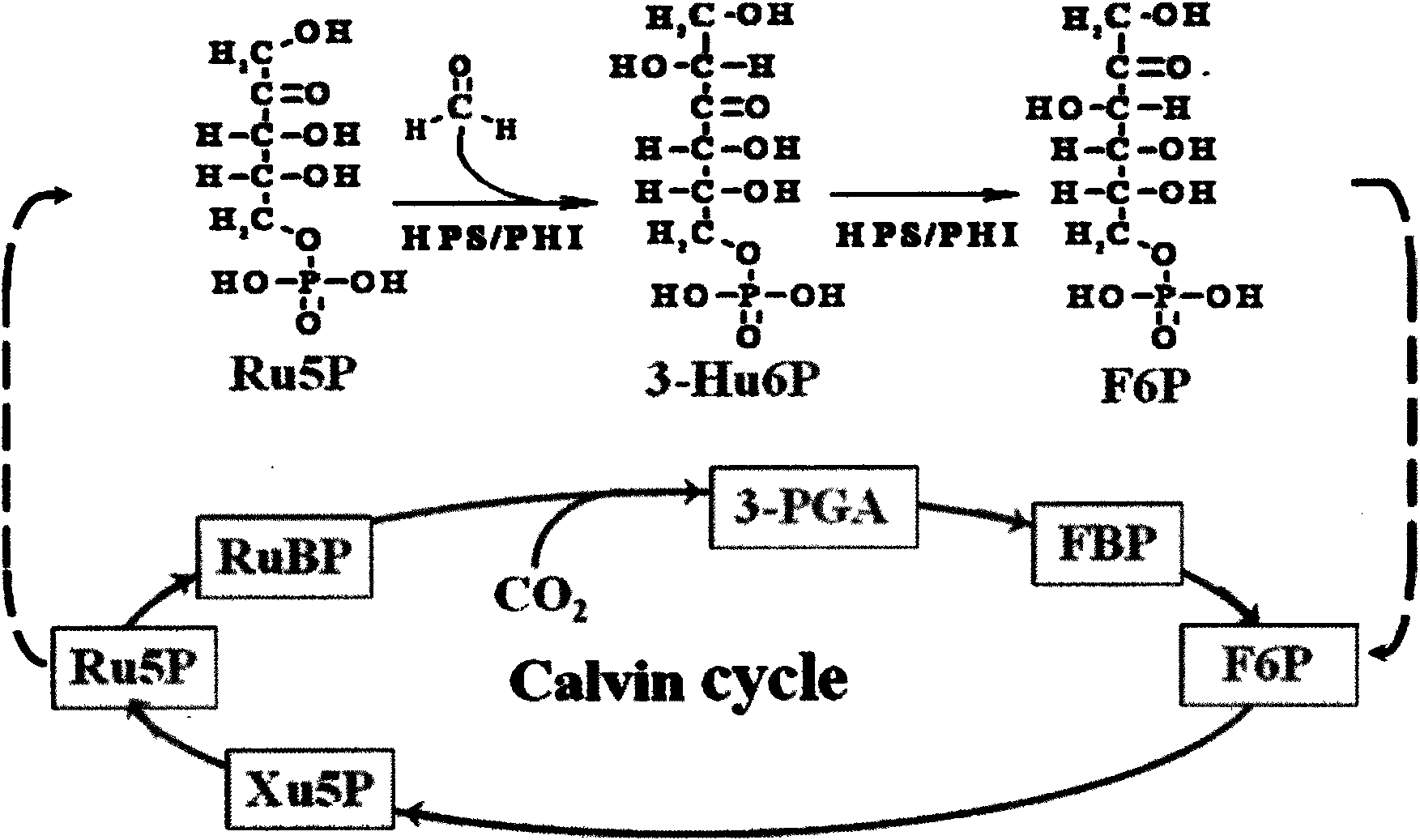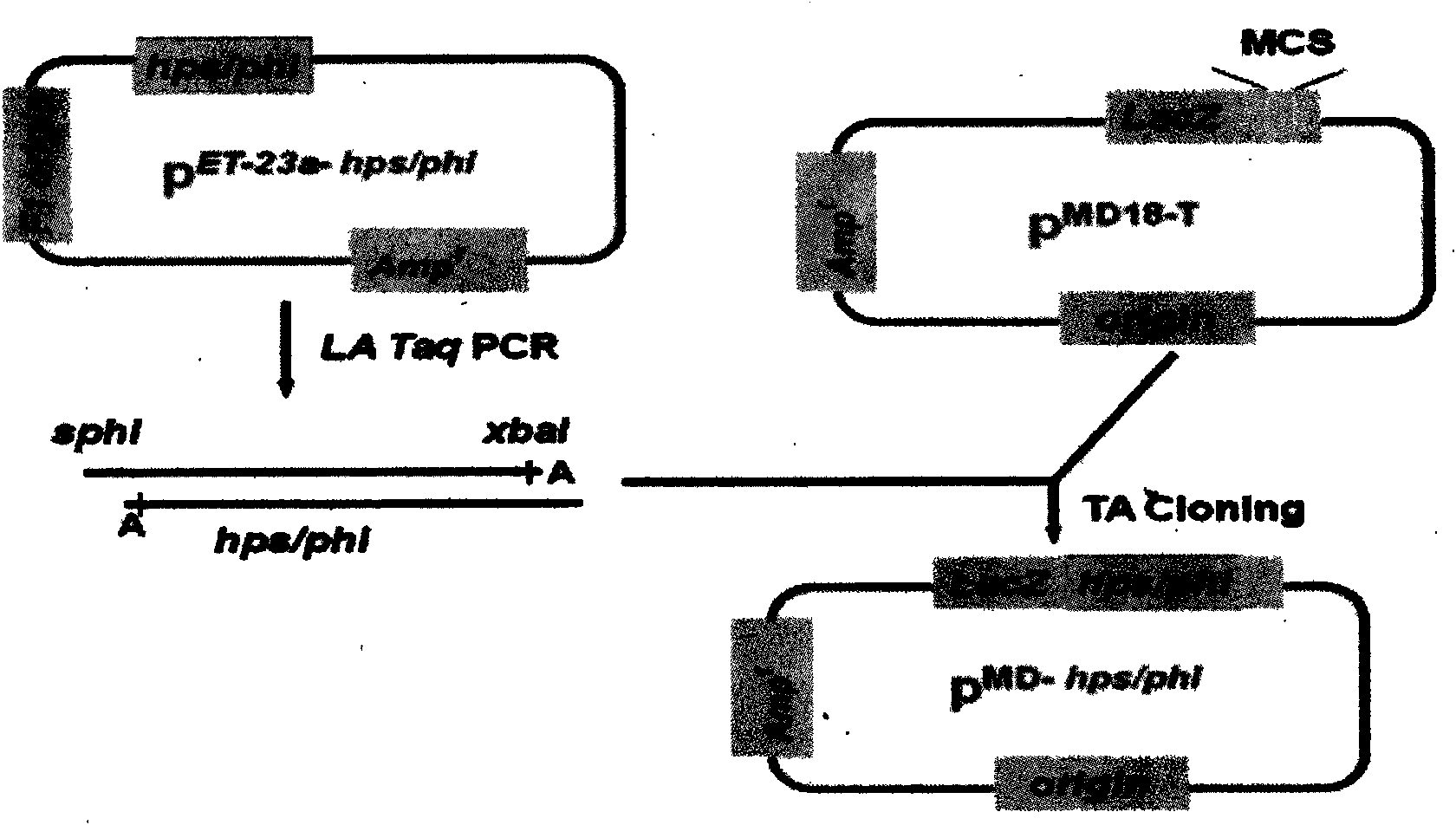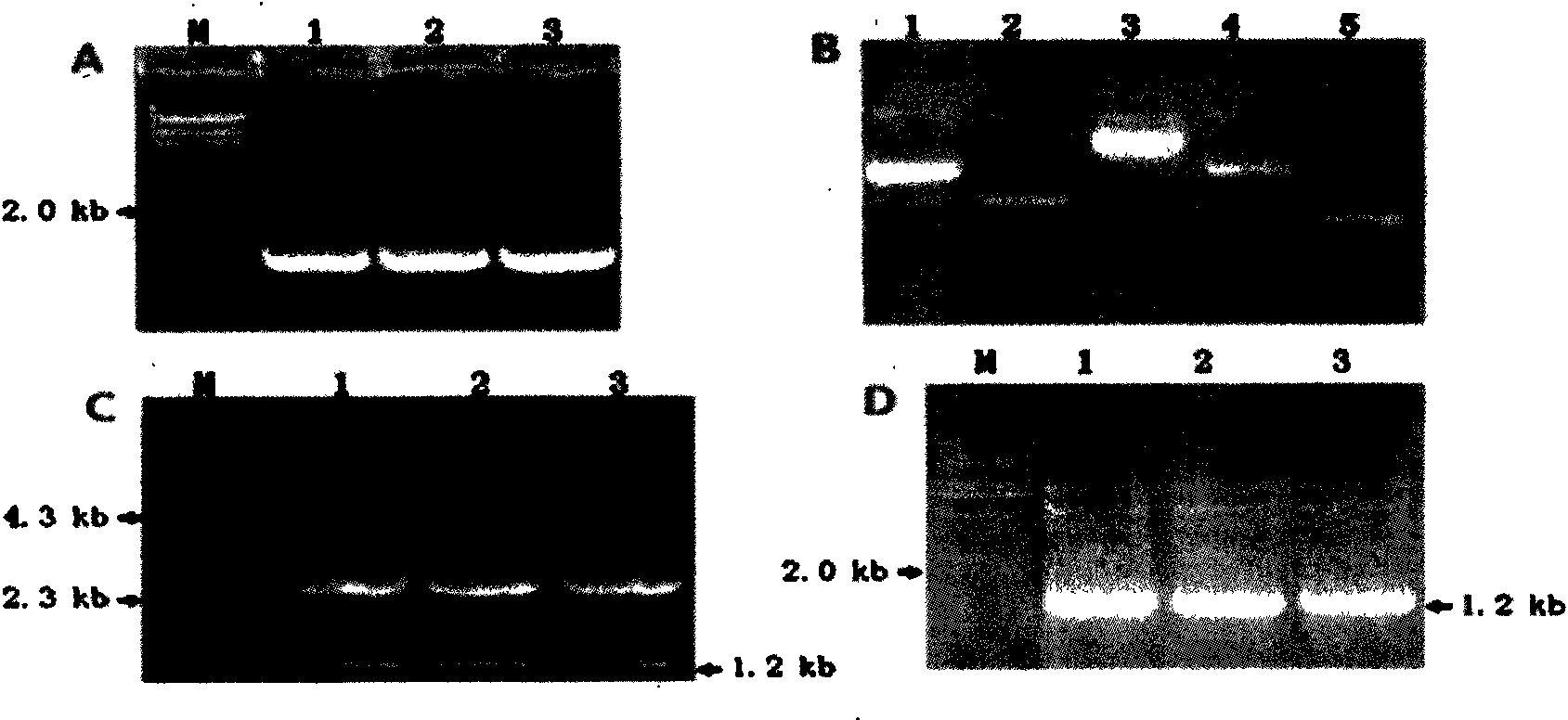Plant expression vector for improving capability of assimilating and formaldehyde absorption of plant and application thereof
A plant expression vector and the technology of the vector, which is applied in the field of plant genetic engineering, can solve the problems of assimilation and absorption of formaldehyde, which are not seen, and achieve the effect of improving the ability of plants to absorb and tolerate exogenous formaldehyde and enhancing the efficiency.
- Summary
- Abstract
- Description
- Claims
- Application Information
AI Technical Summary
Problems solved by technology
Method used
Image
Examples
Embodiment 1
[0070] Embodiment 1: Construction of hps / phi gene plant expression vector pK2-35S-PrbcS-*T-hps / phi
[0071] (1) Amplification and TA cloning of hps / phi gene:
[0072] The amplification of hps / phi gene and the strategy of TA cloning are as follows: figure 2 As shown, using the pET-23a-hps / phi plasmid as a template, design specific primers for the hps / phi gene (upstream primer 5'rmpA: CACC GCATGC AGCTCCAAGTCGCCATCG (SphI), downstream primer 3'rmpB: TCTAGA TCACTCGAGGTTGGCGTGGCGCG(XbaI)) for amplification. Use the upstream and downstream specific primers 5'rmpA and 3'rmpB of the hps / phi gene for PCR, add 50ng of pET-23a-hps / phi plasmid as a template in the PCR reaction mixture, and add 75ng of the specific primer 5'rmpA at the same time And 3'rmpB, 4μldNTP (2.5mM), 25μl of 2×GC BufferI and 0.25μl of LA taq (5U / μl) polymerase (Takara), add double distilled water to make the final reaction volume 50μl. Heat at 94°C for 2 minutes on the PCR instrument, then follow the program ...
Embodiment 2
[0077] Embodiment 2: transform Agrobacterium with the plant expression vector that contains hps / phi gene
[0078] Prepare the competent cells of Agrobacterium, transfer the above-mentioned constructed plant expression vector pK2-35S-PrbcS-*T-hps / phi into Agrobacterium (C58Cl(pPMP90)) by electric pulse method, add spectinomycin Transformants were screened on the plate. Take a small amount of plasmid and add it to the competent cells of Agrobacterium, mix gently; add the mixture into the pre-cooled electroporation cup, tap the cup body gently to make the mixture fall to the bottom of the cup; place the electroporation cup on the electroporation In the chute of the instrument (BIO-RAD), use a 1mm electric shock cup and 200 ohm, 2.5kV / 0.2cm parameters for electric shock, immediately take out the electric conversion cup after electric shock, quickly add 0.5ml SOC medium, mix well, transfer to 1.5 ml centrifuge tube; 28°C, 200rpm shaker culture 3-5h; room temperature, 7500rpm centr...
Embodiment 3
[0079] Embodiment 3: transform plant with the Agrobacterium that contains hps / phi gene plant expression vector
[0080] Pick a single colony of Agrobacterium carrying the plasmid pK2-35S-PrbcS-*T-hps / phi and inoculate it in 50ml of LB medium (containing Spe, 100μg / ml), culture at 180rpm at 28°C for 24h, and wait until the OD 600 To about 1.0, centrifuge for 10min (3000rpm) to precipitate the bacteria. Then use about 10ml of MS liquid medium to suspend, centrifuge for 10min (3000rpm), and precipitate the bacteria. Repeat the above operation 2 to 3 times. Finally, a certain volume of MS liquid medium was added to resuspend, so that the OD of the bacteria 600 The value is 0.5. Geranium sp. frensham (Pelargonium sp. frensham) aseptic seedlings are prepared, geraniums are transformed by leaf disc method through Agrobacterium mediated, and then seedlings are obtained by tissue culture, and further screened to obtain desired transgenic plants. The specific steps are as follows: c...
PUM
 Login to View More
Login to View More Abstract
Description
Claims
Application Information
 Login to View More
Login to View More - R&D
- Intellectual Property
- Life Sciences
- Materials
- Tech Scout
- Unparalleled Data Quality
- Higher Quality Content
- 60% Fewer Hallucinations
Browse by: Latest US Patents, China's latest patents, Technical Efficacy Thesaurus, Application Domain, Technology Topic, Popular Technical Reports.
© 2025 PatSnap. All rights reserved.Legal|Privacy policy|Modern Slavery Act Transparency Statement|Sitemap|About US| Contact US: help@patsnap.com



